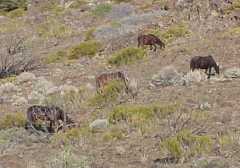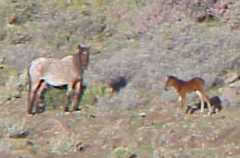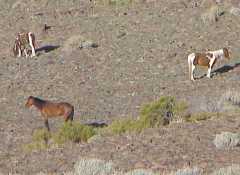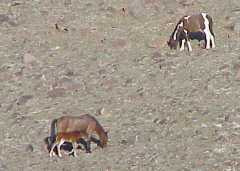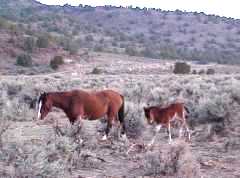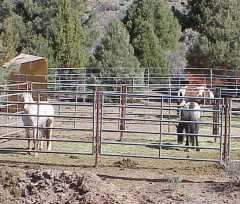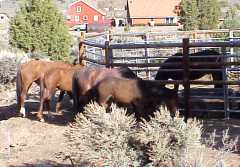Virginia Range Wildlife Protection Association
|
Horses grazing on a hillside
|
| The Virginia Highlands is home to over 1,000 horses. While most are sorrel or bay, there are good numbers of pinto, appaloosa, palomino, roan, dun and grulla colors to be found. |
Roan mare with foal
| |
A couple of nice pintos and a bay
|
A pinto, sorrel and foal
|
| Healthy ranges equal healthy horses. Wild horses in appropriate numbers can benefit the environment. They eat non-native grasses and paw out water holes that can be used by other animals. Keeping the horses in balance with the region's ecosystem is essential, however. Horses are an aggressive species and if they reproduce at an unchecked rate, they will successfully compete for limited food and water at the expense of other species. |
A mare and foal having an
|
| One way to control horse populations is to remove a certain number of animals from the range. In the Virginia Range, most removals involve individual animals or bands that tend to roam into more heavily populated areas, highways, and other locales where they become a constant nuisance or pose a danger to themselves or motorists. The VRWPA traps, holds and releases horses at the request of the County. The horses are usually held in their original range area by volunteer "foster parents" until they can be relocated for safe release or placed with appropriate adopters. | ||
Three "estrays" being held for adoption
|
"Hi, Hairy!"
| |
Continue to Part ThreeReturn to Part OneFor more photos of Virginia Range wild horses, visit
| ||
